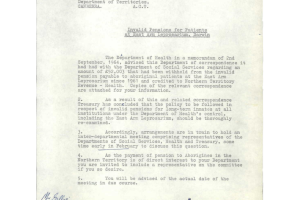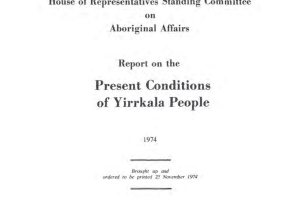
Artefacts about Indirect payments
Aboriginal leprosy patients in the Northern Territory received only a fraction of their pension payments in the 1960s, while other patients got their benefits in full. Government officials disagreed about how to spend the withheld payments and the money went unaccounted for.
Amendments to this Act in 1966 removed references to Aboriginal people altogether, meaning Aboriginal and Torres Strait Islander people in theory had equal access to government payments. However, discrimination continued.
Activist and Member of Parliament, Gordon Bryant, questioned the Minister for Social Services about how DSS checked whether Aboriginal people on reserves, missions and stations were getting their payments.
In response to questions about whether the government should further control payments for Aboriginal people, the Minister for Social Security discussed his concerns about the impacts payments were having, particularly on remote Aboriginal communities.
A 1974 report about the impacts of bauxite mining on the Yirrkala community in Arnhem Land recommended against direct government payments for the community, reflecting a change from advice in a 1963 report.
Researchers interviewed Aboriginal families in Adelaide about their housing, income, government payments and work as part of a wider study into poverty in Australia.
In her autobiographies, Ellie Gaffney discussed her work advocating for direct payments for Torres Strait Islander people and for a DSS office to be established on Thursday Island.






